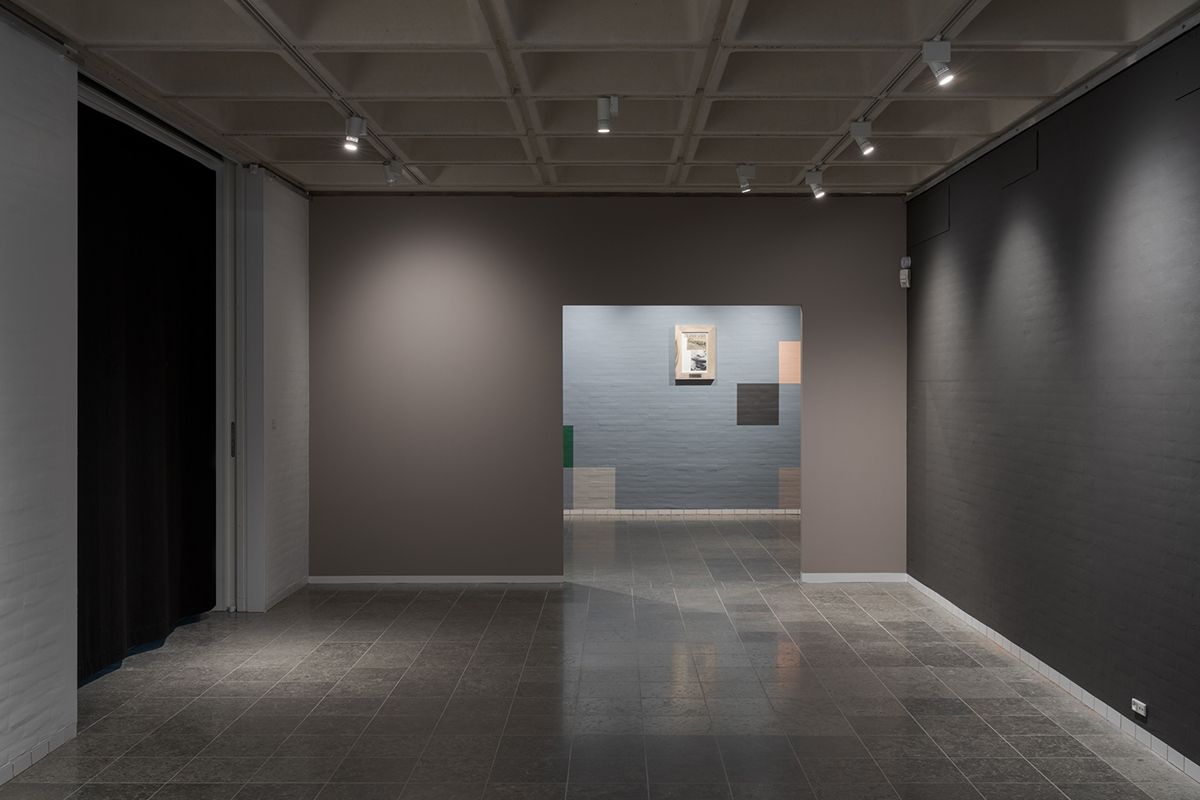Jørgen Michaelsen - Cyber versus Buddha
Special exhibition
The exhibition Cyber versus Buddha by the visual and conceptual artist Jørgen Michaelsen (b. 1961) has been specifically created for the Færch-wing of Holstebro Kunstmuseum, where it occupies the rooms as an overall installation of visual, auditory, spatial and linguistic elements.
European identity between world crises
In general terms, the exhibition expresses itself as a critical-experimental perspective on the tensions that currently characterise the dominant form of consciousness in Western culture. A significant theme is the European idea of the United States as the realisation of the modern utopia, and, in particular, the evolution that this idea has undergone since 1945. Since the end of the Cold War with the collapse of the Soviet Union in 1991, European idealisation of the US and American culture has gradually come under pressure. Russia’s invasion of Ukraine may have strengthened the NATO alliance, but it has particularly exposed Europe’s difficulty in acting as a single autonomous actor on the global geopolitical stage – a stage especially characterised by growing rivalry between the key players, the United States and China, but with a general trend towards a multipolar world order, in which the leading role of the West is no longer a given.
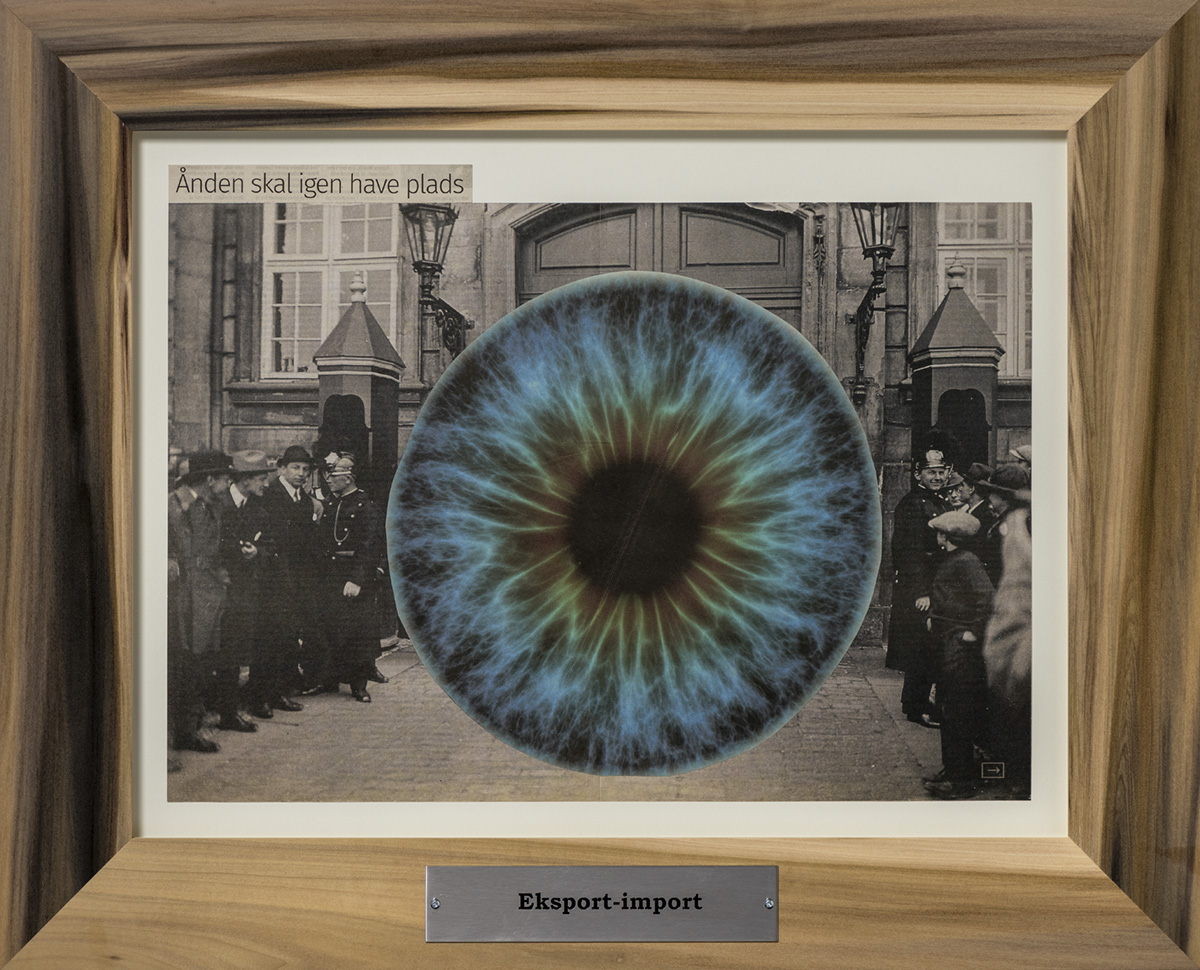
Eksport-import, 2020-22. Collage
A contemporary diagnosis
Behind this identity crisis lies a complex threat landscape with visions of enormous migratory flows triggered by political instability and economic inequality, intensifying struggles for control over resources, the growing vulnerability of critical infrastructure due to the increasing complexity of cyber technologies, the increasingly pervasive surveillance of citizens by states and private companies, the decline of democracy worldwide, and the likely collapse of the global biosphere caused by the apparent inability of the current political-economic structures to change.
All of this comes in the wake of an inter- national financial crisis, a global COVID-19 pandemic, and the withdrawal of the US and other Western countries from Afghanistan after 20 years of failed nation-building, which has ultimately marked the West’s acknowledgement, or at least sensing, of the fundamental collapse of the universal enlightenment project.
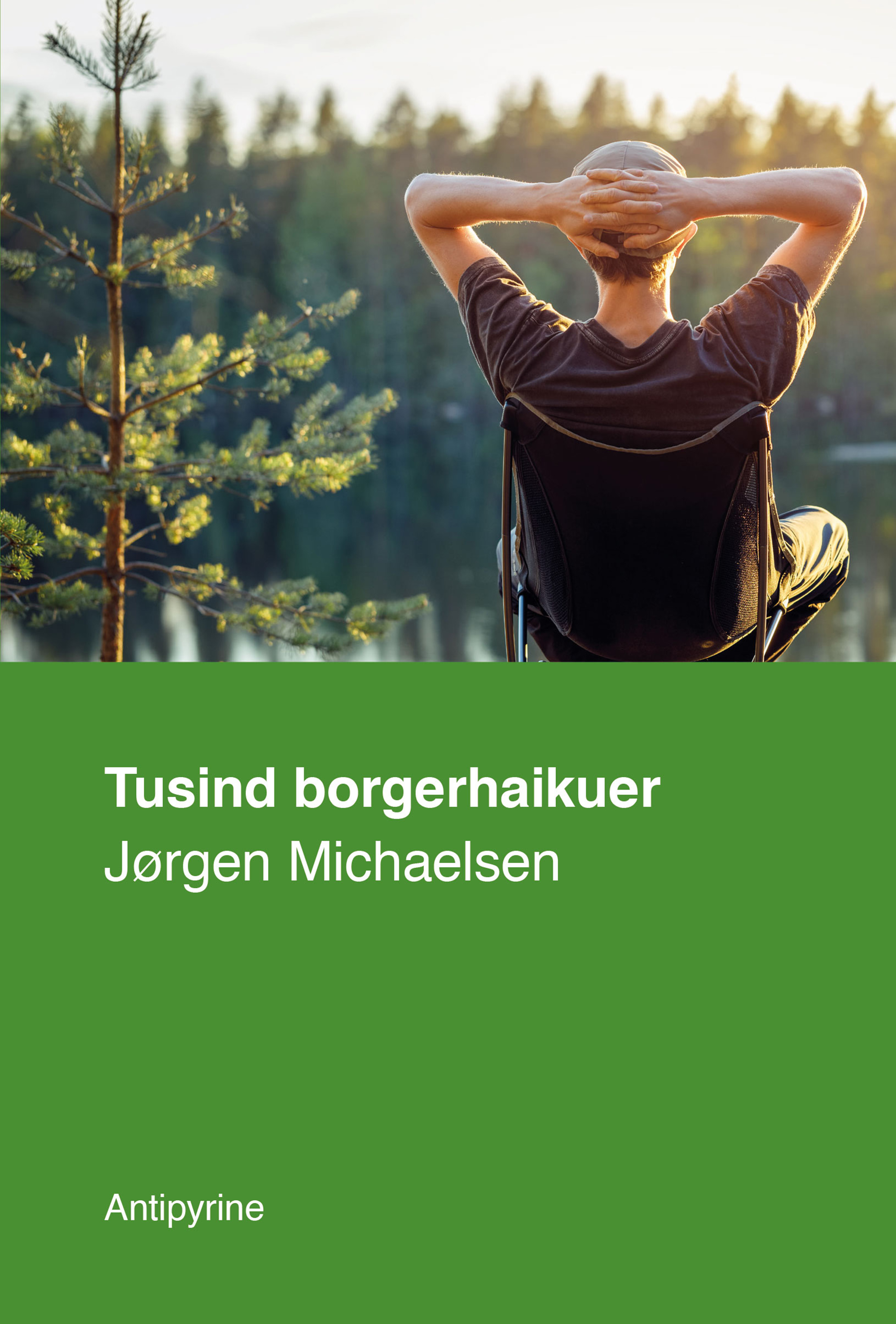
Tusind borgerhaikuer ('A thousand citizen haikus'), Antipyrine 2023. One of the three publications, which are part of the exhibition
Three media dimensions
On the basis of the above diagnosis of our times, the exhibition raises a number of ques- tions about late-capitalist Western European identity in its objective and subjective forms – inter alia by explaining the historical premises for what now appears to be a chronic crisis in the Western world’s self-understanding.
Cyber versus Buddha probes these issues through a total of five main components: The war commentary film Stille hav ('Silent Sea'), the painting installation Wall of Shame, in which the so-called 'care-tachist painting is presented and historically justified, a bunker construction with the quadraphonic audio work I lytterummet ('In the listening room'),
a formation of name badges produced by a 'citizen generator', and the painting Genveje til grisaille ('Shortcuts to grisaille'), as well as a series of collages based primarily on newspapers from 2020-2022, suspended in painted rooms.
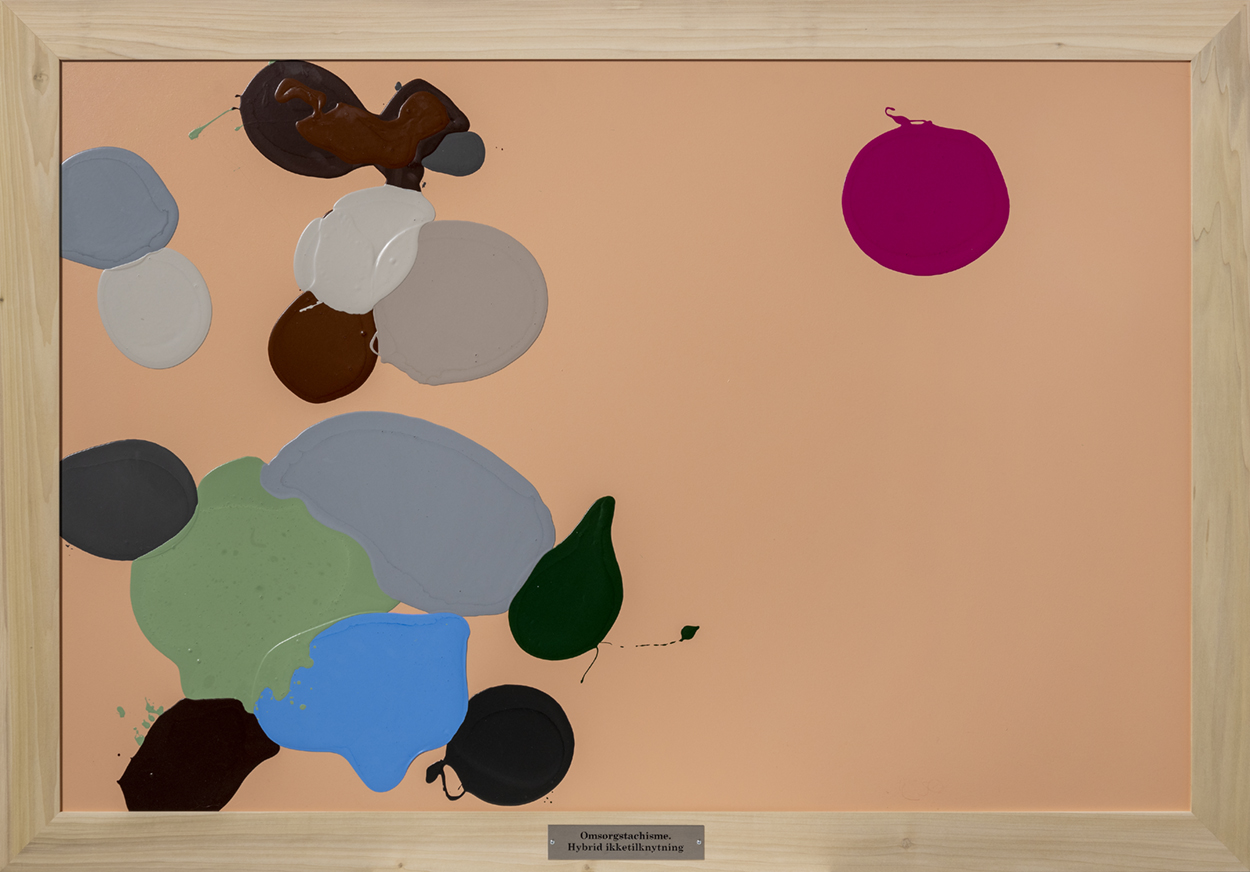
'Care-tachist painting', Hybrid ikketilknytning, ('Hybrid non-attachment') 2023. Photo: Lars Bay
Art as language and thought
In 2021, Holstebro Kunstmuseum presented exhibitions by the Danish artist Albert Mertz (1920-1990) in collaboration with Sorø Kunstmuseum, and by one of the fathers of American conceptual art in the 1960s, Lawrence Weiner (1942-2021). Both artists are strongly represented in the museum’s collection.
Jørgen Michaelsen’s conceptual, ambiguous and linguistically grounded practice shares at an overall level both certain formal features and a deeper artistic kinship with his two notable predecessors – a legacy that the artist very much acknowledges in his simultaneously playful and critically-oriented practice. In 2007, Michaelsen curated the exhibition Albert Mertz – DUER IKKE… NÆSTE! ('Albert Mertz – NO GOOD ... NEXT!') in Den Frie Centre of Contemporary Art (2007). Michaelsen’s Cyber versus Buddha at Holstebro Kunstmuseum is thus the third in a series of conceptual artistic exhibitions investigating artistic thinking, displacements of meaning and the associative range of language.
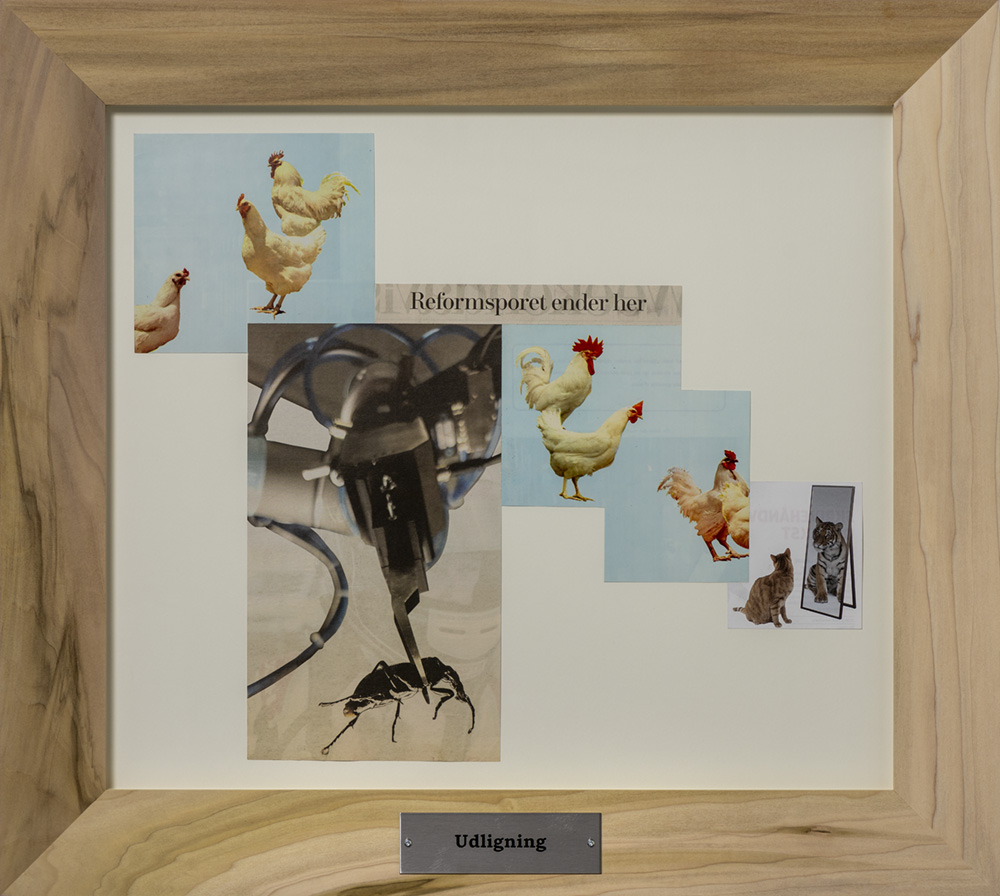
Udligning ('Even out'), 2020-22. Collage
Three book publications
In addition to the actual physical presentation at the museum, the exhibition is further expanding its terrain in the form of a total of three book publications in collaboration with the publishing house Antipyrine: The Cyber versus Buddha exhibition catalogue, the songbook Cockroach and the poetry book Tusind borgerhaikuer ('A thousand citizen haikus'), all of which are closely interwoven with the exhibition.
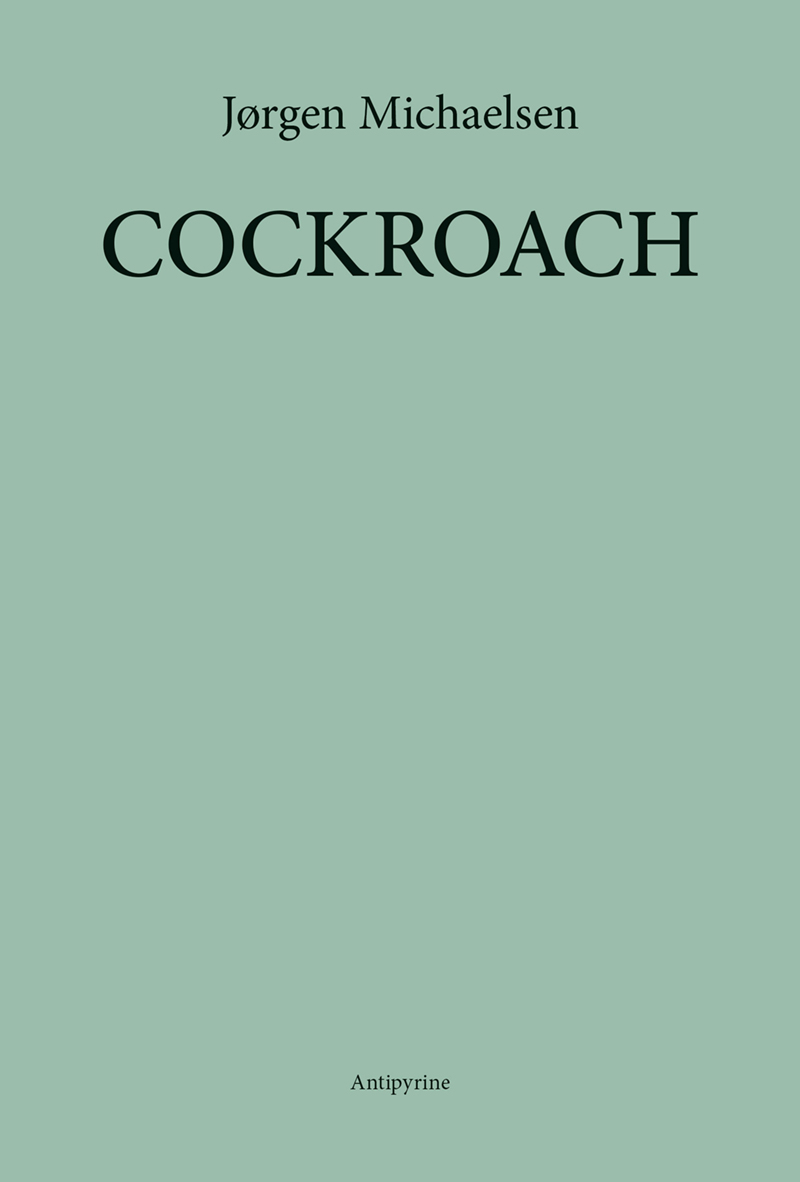
Cockroach, Antipyrine 2023
Jørgen Michaelsen: Language as material

Interdisciplinarity and boundary-seeking are the hallmarks of Jørgen Michaelsen’s artistic work, just as the quirky and ambiguous is reflected in his eclectic writing. This is particularly evident in the periodicals Michaelsen has co-founded over the past 20 years, including Mutant (2002-05), Ny mutant (2007) and Monsieur Antipyrine (2014-19). Another book project, Vektor 2020-21, is comprised of correspondence between Michaelsen and the author René Jean Jensen, and unfolds a wide range of reflections, while the global effects of the COVID-19 pandemic are continuously recorded and commented upon. Jean Jensen is also Michaelsen’s interlocutor in the catalogue for Cyber versus Buddha, thereby continuing the dialogue.
Collaboration and critique
The image-creating, conceptual, linguistically interventionist and thus politically activistic can easily be combined – as Jørgen Michaelsen’s artistic practice testifies.
Collaborations and self-organised activities have been an important focal point of his artistic practice since the early 1990s, when he co-founded the artist collaboration and journal Koncern° – Skrift for kunstneriskfilosofisk grundforskning (1989-93) ('Koncern° – Publication for artistic-philosophical basic research') and the artist-run exhibition space Max Mundus (1994-96), which was one of the pioneering venues of the 1990s in video art, media discussions and artistic archival practice.
Michaelsen studied at the Royal Danish Academy of Fine Arts (1987-94), and has been a member of Den Frie Centre of Contemporary Art since 2006. He is represented in several museum collections in Denmark, including SMK – the National Gallery of Denmark, Museum Jorn, KØS and Randers Museum of Art. Michaelsen was awarded the Eckersberg Medal in 2005, and most recently the Thorvaldsen Medal in 2023.
The exhibition is supported by:
The Danish Arts Foundation, the Augustinus Foundation, the Knud Højgaard Foundation, the June 15 Fund, Sigma Coatings, the Danish Tennis Foundation and the Beckett Foundation.
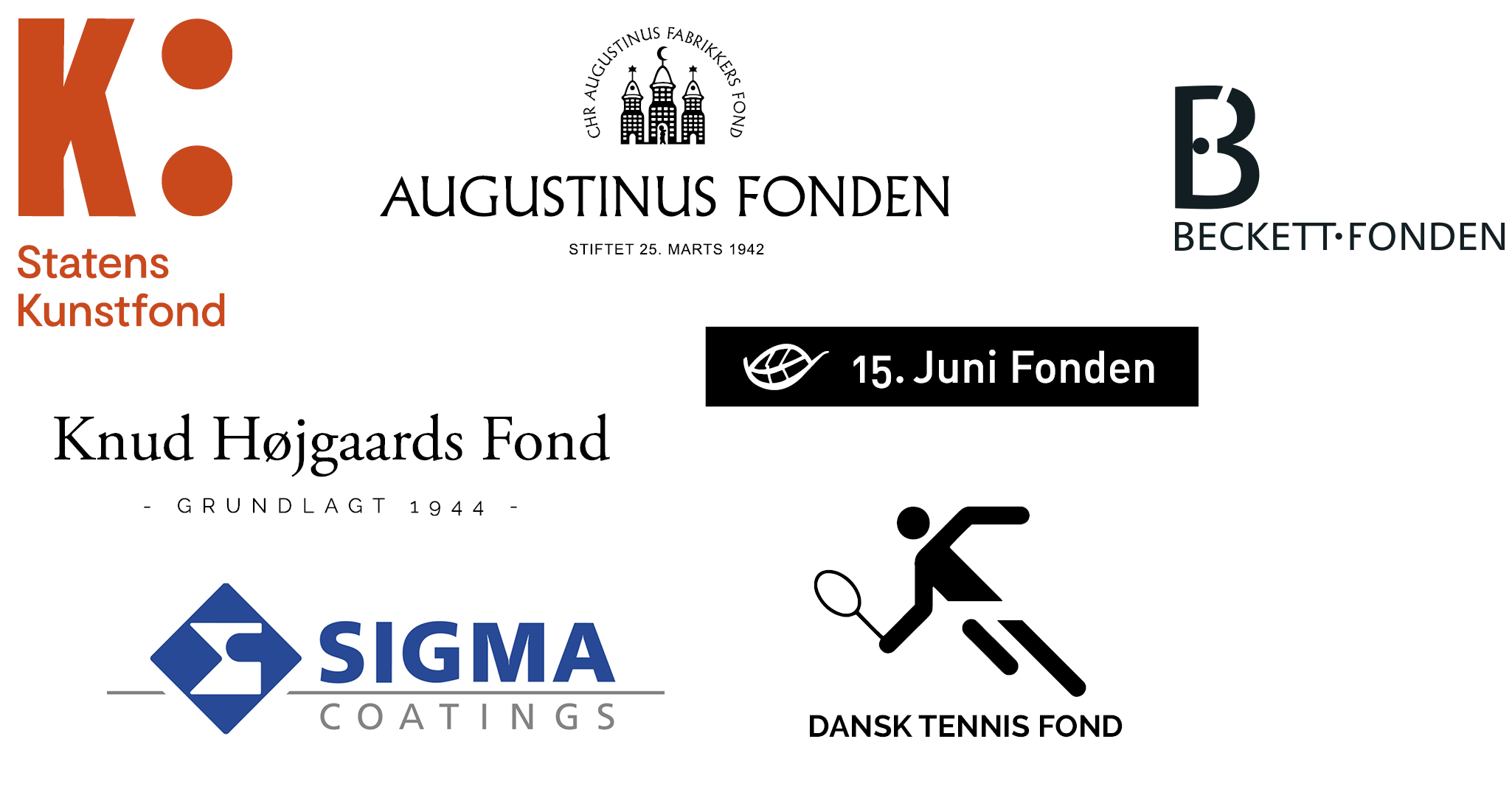
”From the very beginning, we have planned that no one will ever get there. From the very beginning, no one has seriously been able to counteract this. In a certain sense, we have decided that there is no way around invisibility, and that this applies to everyone. In a certain sense, it is not we who are the negation. Oh no, no one is forcing anyone to enter any trap. Oh no, a trap becomes a different kind of problem only in the moment when you become transparent yourself. We are still dealing with the same distilled format. We are still dealing with something that could resemble intelligence, carried out with a dialectical method of a particularly crude nature. We are not the only ones. We are not even the next ones. In which direction will the deluge fall? In which direction lies the firewall? You can make understanding camouflage your guiding principle. You can make it your firm foundation to declare yourself an illusion.”
From Jørgen Michaelsen’s audio work ,'I lytterummet' (In the Listening Room), 2023


